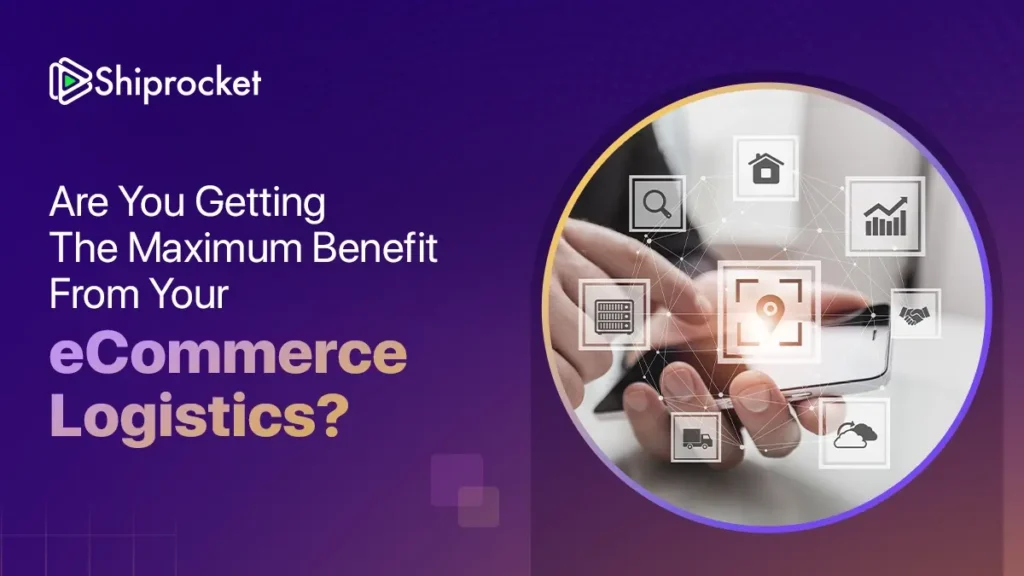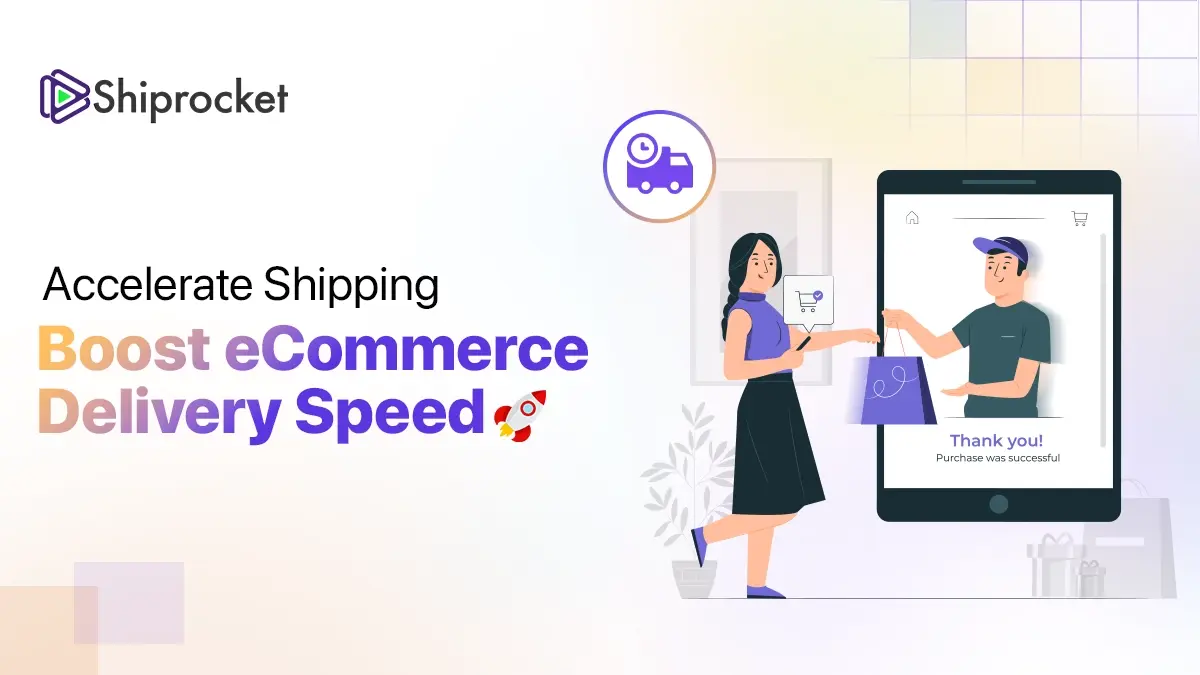Integrated Logistics: Benefits, Strategies & Implementation
In today’s fast-paced working industry, maintaining efficient logistics for your eCommerce business is essential. Utilising integrated logistics helps businesses to maximise efficiency while meeting customer demands. They help in managing the goods production and distribution process, coordinate the activities of different parties involved in the supply chain and make the best use of available resources.
Read on to learn more about integrated logistics and its benefits.

Understanding Integrated Logistics
Integrated logistics refers to the process of managing and coordinating various activities involved in the supply chain, from the acquisition of raw materials to the delivery of finished products to customers. It involves the seamless collaboration of different departments, such as procurement, transportation, warehousing, and distribution, to achieve a common goal of providing customers with high-quality products at the right time, place, and cost.
To understand integrated logistics, it’s essential to break down its components and see how they work together. For instance, procurement involves sourcing raw materials and components needed for production. Once the materials are sourced, they are transported to the manufacturing plant, where they undergo a series of processes before being transformed into finished products.
Once the products are ready, they are transferred to a warehouse, where they are stored before being distributed to customers. Transportation plays a significant role in ensuring the goods are delivered to the desired location at the desired time. It involves coordinating with carriers and freight forwarders to provide the most efficient and cost-effective mode of transportation.
Distribution is the final stage, where the products are delivered to customers. It can be done through retail stores, online marketplaces, or direct delivery to customers’ homes.
Integrated logistics also involves using technology and data analytics to optimise the supply chain’s performance. It includes using software to manage inventory levels, track shipments, and monitor the performance of carriers and suppliers.
Functions of Integrated Logistics
The primary functions of integrated logistics include:
- Transportation Management
Transportation management primarily contributes toward integrated logistics. It involves the planning and execution of the movement of goods from the point of origin to the point of consumption. Effective transportation management ensures that the right goods are delivered to the right place at the right time, using the most efficient and cost-effective means possible.
- Inventory Management
Integrated logistics incorporates inventory management, encompassing planning, control, and optimisation of inventory levels to ensure the timely availability of the correct products at optimal costs. Effective inventory management helps reduce costs, improve customer satisfaction, and increase operational efficiency.
- Warehousing and Distribution
Another crucial function of integrated logistics is warehousing and distribution. It involves storing, handling, and distributing goods throughout the supply chain. Effective warehousing and distribution can help reduce lead times and improve order accuracy.
- Order Processing
Order processing is a significant part of integrated logistics, which takes place after the consumer places an order. The process involves confirmation of in-stock items, picking the goods from inventory and carefully passing them to the sorting area for shipping out.
- Packaging and Material Handling
Packaging and material handling involves designing and implementing packaging solutions that protect products during transportation, storage, and handling of materials throughout the supply chain. Effective packaging and material handling can help reduce damage and deliver quality products.
- Information Management
Information management deals with gathering, managing, maintaining, storing, and disseminating information. It ensures the timely delivery of information to the right people as per the requirements.
Components of Integrated Logistics
Listed below are the primary components of integrated logistics:
- Procurement and Material Management
As the name suggests, procurement and material management involves finding and purchasing raw materials your business requires to produce the final products. It also involves the management of those raw materials throughout the production process. It’s also important to keep track of inventory levels and ensure you have enough raw materials to meet customer demand.
- Shipping and Delivery Management
Shipping and delivery management is all about getting your finished products from the warehouse to your customer’s doorstep. Moreover, you must ensure that your shipping process is efficient and reliable so that your customers receive their orders on time and in good condition.
- Risk Management
It involves identifying potential risks in your supply chain and developing strategies to mitigate them. These risks include delays, disruptions, or quality issues. You can minimise the impact of any unexpected events that may arise by being proactive and prepared.
- System and Technology Integration
Lastly, system and technology integration is all about using technology to streamline your logistics processes. Integrating your system and using automation and data analytics tools can optimise your business operations and improve overall efficiency. It can save you time and money while delivering a better customer experience.
Benefits of Integrated Logistics
Here are some of the benefits of integrated logistics for your business:
- Improved Speed
By eliminating unnecessary steps and bottlenecks in your supply chain, you can increase the efficiency and agility of your operations. It means you can respond faster to customer demands and any problems or incidents that might arise.
- Reduces Expenses
By optimising your resource utilisation and reducing waste, you can lower your operating costs and increase your profit margins. Integrated logistics can help you save on inventory, transportation, labour, and overhead costs. You can also benefit from economies of scale and scope by leveraging your network of suppliers and partners.
- Total Flexibility
You can adapt quickly to changing market conditions and customer preferences by having clear visibility and control over your supply chain. Integrated logistics can help you manage a variety of products and orders, as well as cope with fluctuations in demand and supply. You can also customise your products and services to meet the specific needs of your customers.
- Systematic Inventory Management
You can guarantee ideal inventory levels and prevent stockouts or overstocks by promptly communicating correct information among all the parties engaged in your supply chain. You can estimate demand, schedule replenishment, and keep track of your inventory in real-time with integrated logistics. Additionally, you can enhance the reliability and accuracy of your inventory reports and records.
- Improved Customer Service
You can enhance customer loyalty and retention by delivering your products to your customers in the right quantity, quality, time, and place. Integrated logistics can help you improve your communication and collaboration with your customers and provide them with value-added services such as tracking, returns, or after-sales support.
Tips for Improving Integrated Logistics for eCommerce Companies
Here are some ways to improve your integrated logistics and take your eCommerce business to the next level.
- Streamline your Inventory Management
Inventory management is the backbone of your logistics process. If you have too much inventory, you tie up valuable resources and may end up with dead stock. On the other hand, if you have too little inventory, you risk stockouts and unhappy customers. You can optimise your inventory levels and reduce waste using inventory management software and implementing a just-in-time (JIT) inventory system.
- Optimise Your Warehouse Layout
The layout of your warehouse can have a significant impact on your logistics efficiency. Organising your warehouse logically and efficiently reduces the time it takes to pick up and pack orders. Consider using barcodes and RFID tags to track inventory and automate picking.
- Utilise Automation Technology
Automation technology can help you streamline your logistics process and reduce errors. Consider using automated conveyor systems, robots, and autonomous vehicles to move inventory and reduce the need for manual labour. An automated warehouse management system can also help you track inventory and orders in real-time.
- Choose the Right Shipping Carrier
Choosing the right shipping carrier is essential to delivering your products on time and at a reasonable cost. Compare shipping rates and delivery times from different carriers to find the best option. Consider using multi-carrier shipping software to help you compare rates and automate the shipping process.
- Implement a Returns Management System
Returns are inevitable in the eCommerce business but can drain your resources if not managed properly. Thus, you must implement a returns management system that makes it easy for customers to return products and for your team to process those returns quickly and efficiently.
- Monitor Your Logistics Performance
To improve your integrated logistics, you need to measure your performance and identify key areas for improvement. Monitor your logistics KPIs, such as order cycle time, inventory turnover, and order accuracy. Use this data to identify bottlenecks in your logistics process and implement changes to improve efficiency.
Conclusion
Integrated logistics is more than just a buzzword. It is a strategic and operational necessity for any eCommerce business that wants to survive and thrive in the competitive and dynamic market. By integrating the various aspects of logistics, you can achieve higher levels of efficiency, quality, responsiveness, and customer satisfaction.
Shiprocket offers comprehensive logistics services that can provide you with a competitive advantage over your competition by lowering costs, reducing risks, and maximising the efficiency of your supply chain.
Nevertheless, it’s crucial to keep in mind that integrated logistics is not a universally applicable solution. It takes rigorous study, planning, execution, and evaluation of your particular business objectives and goals to effectively enjoy the benefits. Additionally, effective coordination and communication amongst all the parties engaged in your logistics process are required for successful integrated logistics.
Integrated logistics is a subset of supply chain management that coordinates and optimises transportation, warehousing, and distribution. In contrast, supply chain management includes procurement, production planning, demand forecasting, and supplier management.
Integrated logistics can reduce the environmental impact of supply chain operations by optimising transportation routes, reducing fuel consumption, minimising waste, and improving packaging and recycling practices.
Top strategies for adopting integrated logistics include:
1. Thoroughly analysing the current supply chain
2. Identifying key areas for improvement
3. Investing in the right technology and infrastructure
4. Promoting proper communication and collaboration among stakeholders.






Awesome Article! I would like to thank you for the efforts you had made for writing this awesome article. This article inspired me to read more.